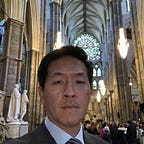(Cross posted from the Vulcan Engineering Blog)
Peter Drucker famously said, “If you can’t measure it, you can’t improve it.” This quote is apt when trying to measure the Impact of projects looking to do good in the world. At Vulcan, we issue and manage grants where we try to create a Theory of Change and Measurement, Evaluation and Learning (MEL) model to measure Impact. But this approach doesn’t seem to work for our Impact products — information technology tools that we’ve built and operate with partners — Largely because the markets that we serve are dynamic, complicated, depend on people, and need real-time insights to achieve Impact. These efforts include includes combatting illegal fishing, conserving coral reefs, and preventing poaching. I believe that a learning by doing approach incorporating operational metrics and direct customer feedback is a better method to measure the Impact of our products.
At Vulcan, we embrace the idea that enabling frontline partners with better data is an effective way to achieve Impact. This is also known as addressing the Last Mile. Automating routine tasks in their workflows, and giving these individuals better insights and predictive analytics increases their capacity to do more good. We primarily provide these capabilities through reporting tools built with modern technology and multiple data sets. A big advantage to this approach is that it allows us to easily get operational data regularly in a non-intrusive way to inform us of trends, issues, and opportunities. These insights get incorporated into our iterative planning process. Surveys and in person meetings are done on occasion to capture qualitative feedback such as customer experience.
Here is an example using EarthRanger, our protected area management tool, which helps park managers make better decisions when dealing with poaching events and managing human-wildlife conflict.
EarthRanger has been deployed to tens of sites in Africa and over the last few years, and parks have logged 300+ poaching arrests and supported 900+ enforcement events. We can’t take full credit for this result as there are other tools, organizations and processes involved. But, the JOC Analysts and protected area management leaders have shared unanimous feedback that EarthRanger was critical in planning and directing resources to catch poachers. By spending time in the field with users, we’re able to deeply understand their pain points and opportunities to inform us of better requirements for future features or Impact projects. And when I say we work with them, I mean we’re there with them. Recently, I had the opportunity to participate in a Customer Advisory Board workshop where representatives from 20+ protected areas got together in Tanzania to share their feedback and requests on EarthRanger. One morning, I had an opportunity to train with the local ranger team. I snapped this photo while participating in their routine Physical Training (PT) session.
Rangers faces have been blurred to protect their identities.
As you can see, I struggled to keep up even without wearing a 40lb rucksack. This experience gave me a firsthand view of what the Protected Area Managers (PAMs), JOC staff, and rangers do every day to protect the lands and wildlife. It was clear that with EarthRanger, they’re able to respond to security issues in real-time with the right resources. This is a task that traditionally took hours and relied on imperfect and old data. For example, at Liwonde, they called EarthRanger “an incredibly effective tool… Easy to use, all in one system revolutionizing the way we manage the park.” What’s especially meaningful is that there have been no loss of animals since they started using EarthRanger. There is no doubt that we’re achieving Impact here.
Whether it’s catching poachers, combating illegal fishing, or saving coral reefs Vulcan is committed to having Impact with strong partnerships and deep relationships with our customers. Not only is it important to use the right tool for the right problem, but you should also use the right Impact measurement model for the right project.
